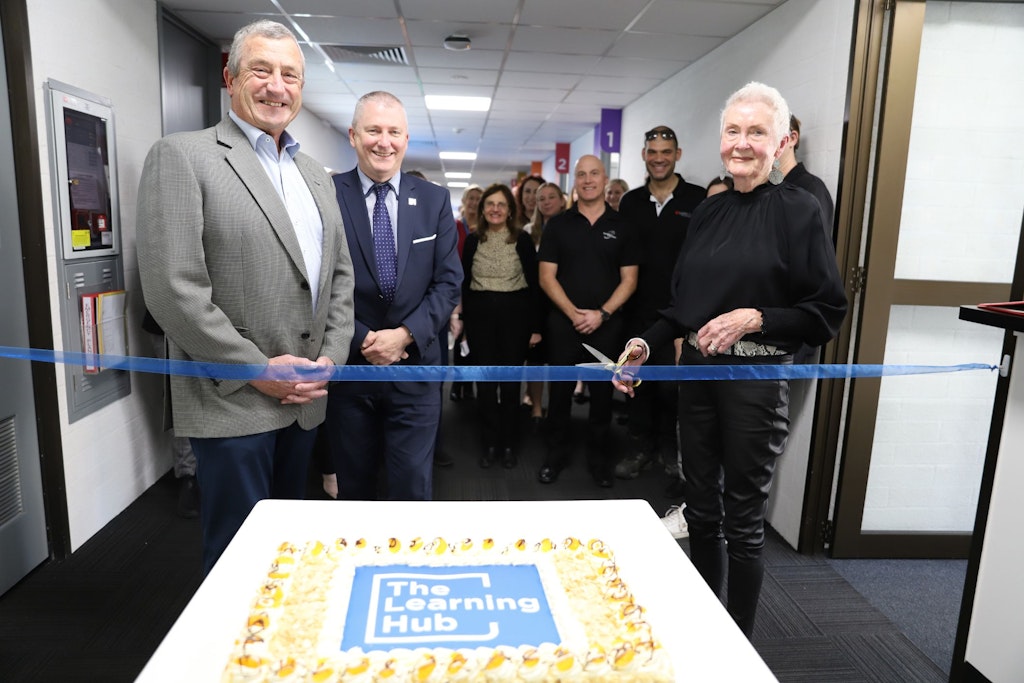Newly launched learning hub strengthens workforce engagement
Last updated on 4 October 2023

A skilled, knowledgeable and engaged workforce is central to success in aged care, otherwise, the sector would be unsustainable. And so, with a focus on strengthening learning and development for its existing and future workforce, one of Australia’s most recognised providers has launched its own on-site training facility. It’s a move that could pay dividends.
Key points
- Southern Cross Care (SA, NT & VIC) Inc (SCC) has opened a new facility called The Learning Hub which is billed as a site for top-quality training of staff.
- Designed as a multi-purpose space, it features a fully equipped mock resident bedroom and bathroom where staff can learn and train prior to stepping into a physical site.
- There is also a garage space for home care staff who can safely learn and practise lifting and assisting clients with all car-related tasks.
- A 65-seat lecture theatre named in honour of the former SCC Director of Nursing at Lourdes Valley, Marie Meaney, provides an inclusive learning environment for large groups. The naming also recognises the impact Ms Meaney had during her 20-year tenure.
SCC was in a strong position to purchase a building located on the same block as their central office in Glenside, Adelaide. Initially used as a warehouse during the COVID-19 pandemic, there was always an intention to turn the space into an impactful resource for grander purposes.
Helen Cutler, Group Manager Recruitment and Capability, told hello leaders that there was a widespread desire to have more in-person education opportunities and time for staff to practise before entering an actual aged care home. The pandemic also had a major impact on The Learning Hub’s development.
“During COVID-19 there was a restricted amount of face-to-face training and when we returned to the office environment we saw a really positive increase in engagement from staff wanting to do more [in-person] training and development,” Ms Cutler explained.
“I think people were exhausted with online learning and when you’re working in a healthcare environment people crave the interaction, they want to touch a piece of equipment, and sometimes you have to demonstrate things to get the best outcomes.”
As a multipurpose space designed to cater to both in-person learning and virtual learning, it’s an effective tool for an organisation with staff in three different States and Territories. The mock bedroom and bathroom can be viewed from all sides, depending on the training requirements, giving online learners a clear look at what’s going on. Interactive technologies such as the Google Jamboard and a computer lab are utilised to foster increased interaction and engagement.
The site is also decked out in all relevant equipment, including nursing trolleys and nurse call alarms, to give staff access to everything they would encounter in the real world.
“There are different things you wouldn’t necessarily see in a training environment. You would in an aged care setting, but not a training environment so we’ve just tried to replicate it as best we can,” Ms Cutler said.
“It’s much better to train in an environment where you can show somebody effective practice. We don’t tend to talk about best practices because what’s best for me might not be best for you. So we focus on what’s an effective practice, what the standards require and how you can work around things.”
Learning leads to retention
According to the Australian Bureau of Statistics (ABS) Job Mobility data, the aged care sector is among those with the highest amount of job mobility. Between February 2022-23, just over 10% of ‘community and personal service workers’ left the sector, as did 7.4% of ‘health care and social assistance’ staff.
Workforce movement is nothing new for the sector, the data just reinforces what most employers know: workforce retention is no easy feat. But by taking the reins of their training and investing in on-site education facilities, Ms Cutler said SCC is doing all it can to retain staff, even if it means supporting them in small ways.
“The biggest thing people stress about when they go somewhere they’ve not been before is parking. We have parking and a kitchen so we can take away those stressors and just allow staff to bring their whole self and concentrate on the outcomes for the day, which is to learn something new with colleagues they may not have met before,” she said.
Just as aged care has shifted its approach to person-centred care over the years, there is a growing focus on person-centred support for staff. This may go by many names, but one such example from Ms Cutler is something she calls ‘magic moments’. She said every moment an employer has with their staff can create a magic moment, further reinforcing the importance of in-person education and experiences with staff.
“You need to ensure staff have experiences they’ll never forget. Whether it’s in a learning environment, a one-on-one or an ‘R U OK Day’ event, these moments create engagement with an employee and influence how likely they are to stay,” Ms Cutler said.
“We know it is challenging to retain the aged care workforce because we’re all competing with disability and healthcare [employers]. We’re all competing for the same pool so making sure employees are engaged and want to stay is really important.”
“For us, this is the start of more to come. We really want to see what we can implement to create those experiences that can really set up our workforce for success so when they hit the floor they are ready and confident,” she added.